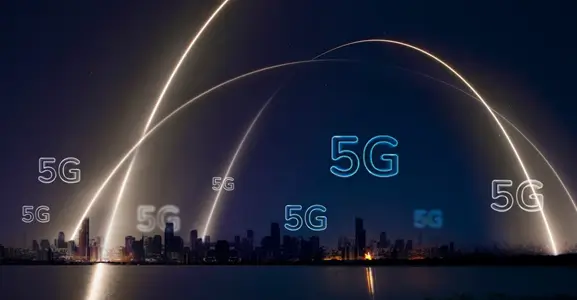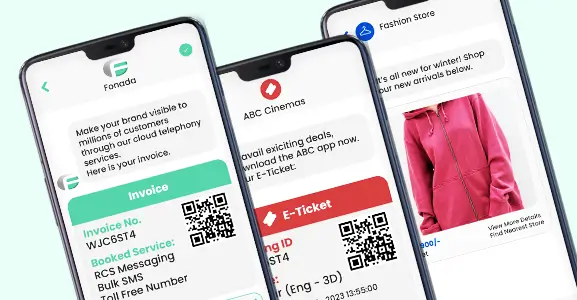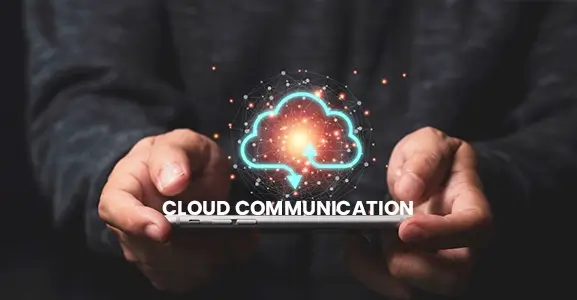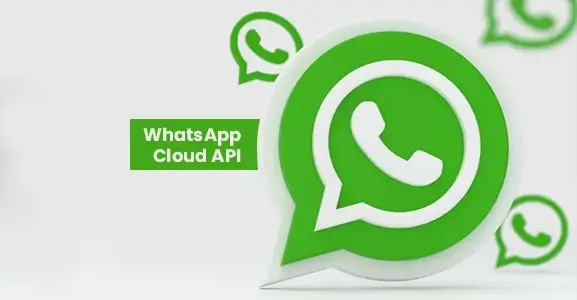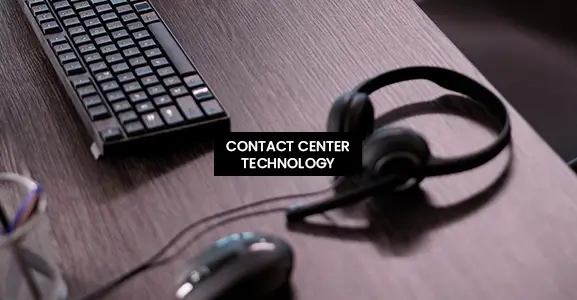The evolution of 5G (fifth-generation) wireless technology has been a significant development in the telecommunications industry, promising faster speeds, lower latency, and support for a wide range of applications beyond traditional mobile communications. Here is an overview of the key milestones in the evolution of 5G:
Initial 5G Rollouts (2018-2020):
- The first commercial 5G networks were launched in select cities around the world in 2018 and 2019.
- Initial deployments focused on providing faster mobile broadband speeds, primarily for smartphones and other consumer devices.
- Early 5G networks operated in the sub-6 GHz frequency bands, offering increased data speeds compared to 4G LTE.
Mid-Band And Millimeter Wave Expansion (2020-2022):
- To achieve higher data rates and lower latency, many countries began auctioning off mid-band and millimeter wave (mmWave) spectrum.
- mmWave technology, in particular, offered extremely high data speeds but had limited range and required more infrastructure.
- These frequency bands became central to enabling advanced 5G services like fixed wireless broadband and IoT applications.
Standards Development And Release (2020s):
- 3GPP (3rd Generation Partnership Project), the standards organization governing cellular technologies, continued to develop and refine 5G standards.
- Release 16 and Release 17 of the 5G specifications introduced features to support industrial IoT, vehicle-to-everything (V2X) communication, and more.
Network Slicing And Edge Computing (Ongoing):
- 5G introduced the concept of network slicing, which allows operators to create customized virtual networks tailored to specific use cases.
- Edge computing capabilities were integrated into 5G networks, reducing latency and enabling applications that require real-time processing, such as autonomous vehicles and augmented reality.
5G In Industry And IoT (Ongoing):
- 5G is being deployed in various industries, including manufacturing, healthcare, agriculture, and logistics.
- It supports IoT deployments at scale, connecting a vast array of devices and sensors for data collection and automation.
Private 5G Networks (Ongoing):
Enterprises have begun deploying private 5G networks to meet their specific communication needs, ensuring data security and reliability for critical operations.
5G Advanced And Beyond (Future):
Beyond the current 5G deployments, the industry is looking at 5G Advanced and eventually 6G technologies, which will further enhance speed, capacity, and new use cases.
Global Adoption (Ongoing):
- 5G is continuing to roll out worldwide, with varying levels of deployment and adoption in different regions.
- Its full potential is yet to be realized as more devices, applications, and infrastructure are developed to take advantage of its capabilities.
- The evolution of 5G is ongoing, and it is expected to continue to shape the telecommunications landscape for years to come, enabling a wide range of innovative applications and services across various industries.
Evolution From 1G To 5G Technology
1G to 5G evolution has seen significant improvement in cellular connectivity. Let us dive into the details:
1G (First Generation)
It was introduced during the 1980s. Through analogue radio signals, only voice communications were supported. The 1G era was characterized by briefcase-sized cellular phones and short discussions between several individuals.
2G (Second Generation)
It was introduced during the 1990s. It uses digital radio waves and allows 64 Kbps of voice and data transmission. The demand for mobile services increased steadily after 2G’s introduction.
3G (Third Generation)
It was introduced during the 2000s. It can transmit telephone signals, including digitized voice, video conversations, and conferencing, at 1 to 2 Mbps speeds. The 3G world was characterized by pocket-sized mobile phones, SMS, and mobile internet access.
4G(Fourth Generation)
It also makes 3D virtual reality possible with a top speed of 100 Mbps to 1 Gbps. Smartphones, app stores, and video streaming platforms like YouTube got popular during the 4G era.
5G (Fifth Generation)
With over 1Gbps, it can connect the world. The 5G revolution can completely transform our professional and private lives by facilitating new use cases such as connected vehicles, augmented reality, and better video and gaming.
Advantages (Benefits) Of 5G Technology
5G (fifth-generation) wireless technology introduces several key features and improvements over its predecessors (4G LTE and earlier generations). These features are designed to provide faster speeds, lower latency, improved reliability, and support for a broader range of applications.
Here are some of the advantages of 5G:
- Higher Data Rates: 5G offers significantly faster data rates compared to 4G LTE. It can deliver multi-gigabit per second (Gbps) peak data rates, enabling high-quality streaming, ultra-fast downloads, and improved user experiences.
- Low Latency: 5G networks aim to achieve ultra-low latency, reducing the delay between sending and receiving data. This low latency is crucial for applications that require real-time communication, such as autonomous vehicles, remote surgery, and augmented/virtual reality (AR/VR).
- Enhanced Capacity: 5G networks are designed to handle a more substantial number of connected devices simultaneously. This increased capacity is vital for supporting the growing Internet of Things (IoT) ecosystem and the massive number of devices expected to be connected to the network.
- Network Slicing: 5G introduces the concept of network slicing, allowing network operators to create virtual, customized slices of the network to cater to specific use cases. Each slice can be optimized for a particular application or service, ensuring the network meets diverse requirements efficiently.
- Improved Reliability: 5G networks incorporate advanced technologies to enhance reliability and reduce downtime. Features like network redundancy and self-healing capabilities help ensure uninterrupted connectivity.
- Millimeter Wave (mmWave) Frequencies: 5G utilizes higher frequency bands, including mmWave, to provide extremely high data speeds. These frequencies have shorter range but can deliver gigabit-level speeds in dense urban areas.
- Massive MIMO (Multiple-Input Multiple-Output): 5G networks employ advanced antenna technology, such as massive MIMO, to improve spectral efficiency and increase network capacity by using multiple antennas for transmitting and receiving data.
- Dynamic Spectrum Sharing (DSS): DSS allows 4G and 5G technologies to share the same spectrum bands. This makes it easier for network operators to transition to 5G by using existing infrastructure and spectrum resources.
- Energy Efficiency: 5G networks are designed to be more energy-efficient than previous generations, which is essential for reducing the carbon footprint of wireless communications.
- Support for IoT: 5G provides robust support for IoT devices, both in terms of massive device connectivity and power-saving features. It enables IoT applications across various industries, including smart cities, agriculture, healthcare, and more.
- Security Enhancements: Security features have been enhanced in 5G to protect against evolving threats. Features like improved authentication and encryption protocols help safeguard data and communications.
- Global Standard: 5G is being standardized globally, ensuring interoperability and compatibility between networks and devices worldwide.
- Edge Computing: 5G networks are integrated with edge computing capabilities, which reduce latency and enable real-time processing at the network edge, supporting applications like autonomous vehicles and industrial automation.
- Capability: 5G evolution can serve mission-critical connectivity and IoT with faster mobile broadband service.
- LTE upgrade: LTE stands for long-term evolution. The 5G LTE upgrade offers lesser latency and faster speed than 4G.
- Speed: It can deliver up to 20 Gbps and average 100Mbps speed, making it up to 100 times faster than its predecessors. It uses radio waves with a higher frequency than earlier networks, contributing to the speed boost.
- Capacity: The number of people who can use the network and how well it works will increase by up to 100 times.
- Use of the spectrum: It improves its utilization, from bands with frequencies below 1 GHz to bands with higher frequencies.
Disadvantages Of 5G Technology
While 5G technology offers numerous advantages, it also comes with some disadvantages and challenges. It’s essential to consider these drawbacks alongside the benefits to make informed decisions about its deployment and use.
Here are some of the disadvantages of 5G technology:
- Limited Coverage Area: 5G networks, especially those using high-frequency millimeter wave (mmWave) bands, have limited coverage areas. The higher frequencies result in shorter transmission ranges and poorer penetration through obstacles like buildings and trees. This means that 5G coverage is often concentrated in urban areas, leaving rural regions with less access.
- Infrastructure Investment: Deploying 5G infrastructure, particularly mmWave small cells, requires significant investment. Network operators must install many more base stations and antennas to provide widespread coverage and support the higher frequency bands, leading to increased deployment costs.
- Interference and Line-of-Sight: mmWave signals can be easily obstructed by buildings, trees, and even rain. They require a clear line-of-sight to work effectively. This limitation can lead to inconsistent connectivity in certain environments.
- Device Compatibility: Not all existing devices are compatible with 5G networks. Users must upgrade to 5G-capable smartphones and other devices to take advantage of the technology. This can be costly for consumers.
- Security Concerns: As 5G networks handle more sensitive data and support critical infrastructure, they become more attractive targets for cyberattacks. Enhanced security measures are required to protect against potential threats.
- Health Concerns: Some individuals and groups have raised concerns about potential health effects associated with the higher-frequency electromagnetic radiation used in 5G technology. However, extensive scientific research has not found conclusive evidence of harm.
- Energy Consumption: While 5G technology is designed to be energy-efficient, the deployment of many additional small cells and network infrastructure components can result in increased energy consumption. Energy efficiency remains a concern, especially as 5G networks expand.
- Regulatory Challenges: The allocation and management of spectrum, as well as regulatory requirements, can pose challenges for 5G deployment. Different countries have varying approaches to spectrum allocation and licensing, which can affect the availability and development of 5G networks.
- Cost of Service: High-speed 5G services may come at a premium cost, potentially limiting access for lower-income individuals or regions. Data plans for 5G can be more expensive than those for 4G.
- Privacy Issues: The increased connectivity and data transmission capabilities of 5G networks raise privacy concerns. More data will be transmitted, potentially leading to data breaches or privacy violations if not adequately protected.
- E-Waste: The rapid pace of technological advancement may lead to a faster turnover of devices as users upgrade to 5G-compatible hardware, resulting in increased electronic waste.
- Compatibility Issues: Transitioning to 5G may lead to compatibility issues between 5G and older technologies like 2G, 3G, and 4G. Seamless handovers between different network generations can be challenging.
It’s essential to weigh these disadvantages against the advantages of 5G technology and consider the specific context and use cases when implementing it. Mitigating challenges and addressing concerns, such as coverage, privacy, and security, will be critical as 5G networks continue to expand and evolve.
FAQs
5G evolution is the fifth version of wireless technology. Compared to its predecessors, like 4G, it has much faster speeds, less latency, and more capacity.
5G has the potential to be many times faster than 4G, with peak transmission rates of 20 Gbps and average data rates of 100 Mbps or more. 5G offers greater capacity than 4G. 5G is intended to offer a 100x network capacity and efficiency improvement.
The evolution of 5G technology is the latest LTE mobile broadband network update. 5G enables a new network to connect nearly everyone and everything, including machinery, objects, and devices.
5G networks are also anticipated to enable new industries in India, including smart cultivation, autonomous vehicles, and automated production. By the end of 2023, 8.9% of all smartphone users will be on 5G networks, compared to only 0.9% in 2022.
The 5G system means the fifth generation of mobile networks. This wireless technology is after 1G, 2G, 3G, and 4G networks. 5G enables a new network to connect nearly everyone and everything, including machinery, objects, and devices.
5G’s networking capabilities could transform industrial automation. Low-latency wireless connectivity will help industry executives monitor machinery in real time.
For Indian consumers, 5G already provides a significant improvement over existing 4G networks in terms of speed and latency, allowing them to enjoy continuous access to services like excellent video streaming, smartphone gaming, and video calling while on travel.
5G will improve our lives by providing faster download speeds, lower latency, and greater accessibility for billions of devices. The 5G revolution could improve corporate efficiency and increase consumer information access. New student experiences could revitalize education and support public safety AI in telecommunication.
We can expect better bandwidth and more rapid transferring data with 5G. This will boost the number of linked devices that need quick, reliable data transfers. The evolution of 5G will boost the number of associated devices.
The consumer will gain from the social impact, leading to better health care, smarter cities, and better ways to have fun, including augmented reality and faster connections. The industry will gain from increased operational efficiency and enhanced working conditions.
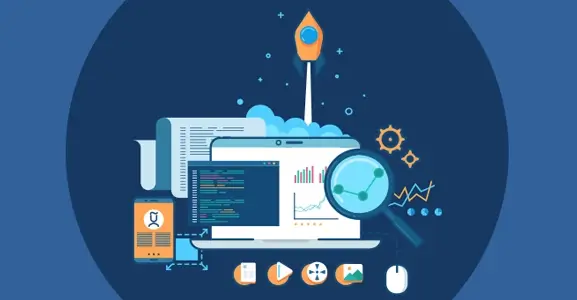
Dec 11, 2024
Top Contact Center Optimization Tools For 2024
“A thriving business knows how to fetch maximum output from limited resources by optimizing ca... Read More
Nov 13, 2024
What Is Brand Communication? CPaaS Role Explained
Did you ever wonder why some advertisements grab your attention instantly, while others do not? The... Read More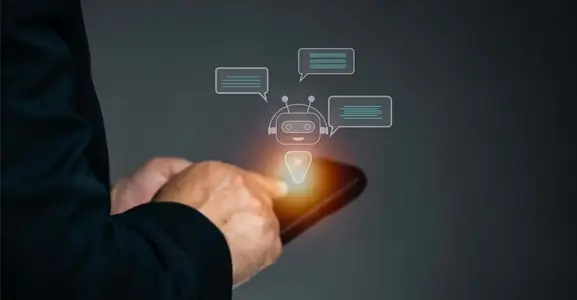
Nov 01, 2024
What Is Automated Messaging And How Does It Work?
Automated messaging or text automation empowers businesses and marketing professionals to connect wi... Read MoreLatest Updates
From Fonada
Industry Insights, Trends, Innovations, Updates, and Case Studies from Industry Experts
View
Customer
Reviews
Discover why our customers love us - read their authentic and heartfelt reviews!
View
Case
Studies
Explore real-life scenarios, offering analysis, and solutions to practical challenges
View
Convert Leads Into Sales With Fonada
Trusted CPaaS Solution Provider

